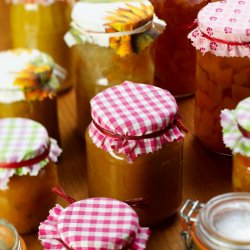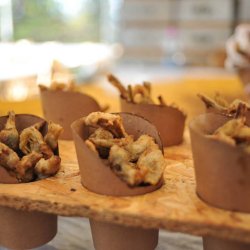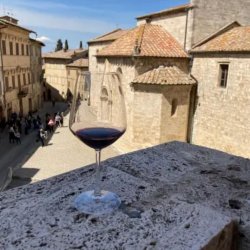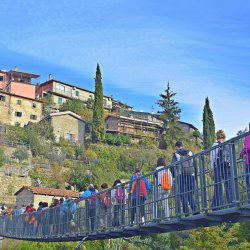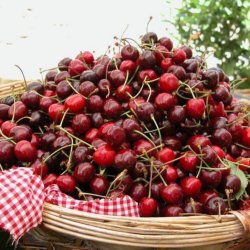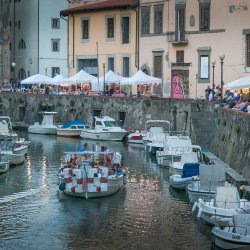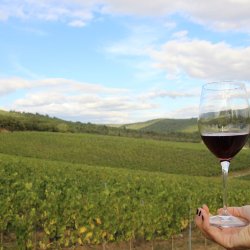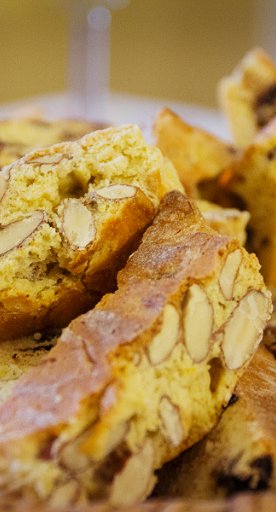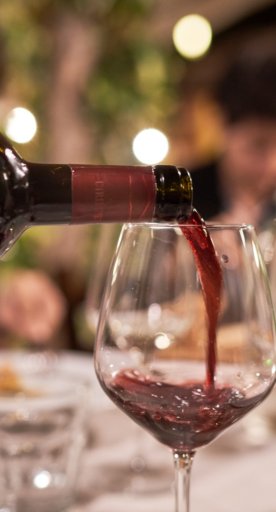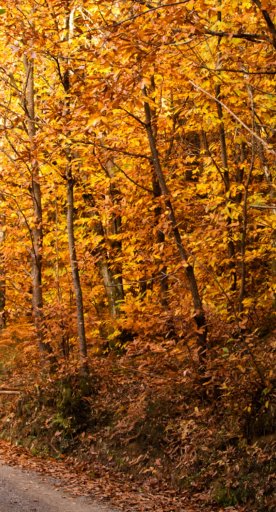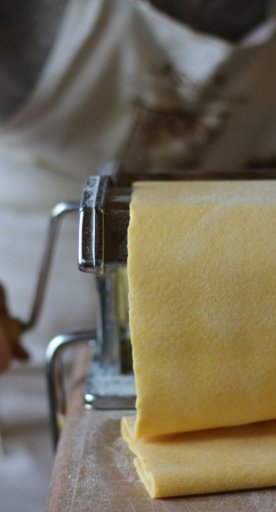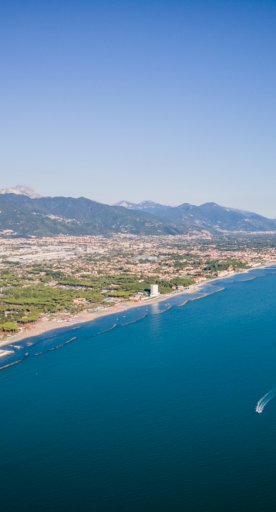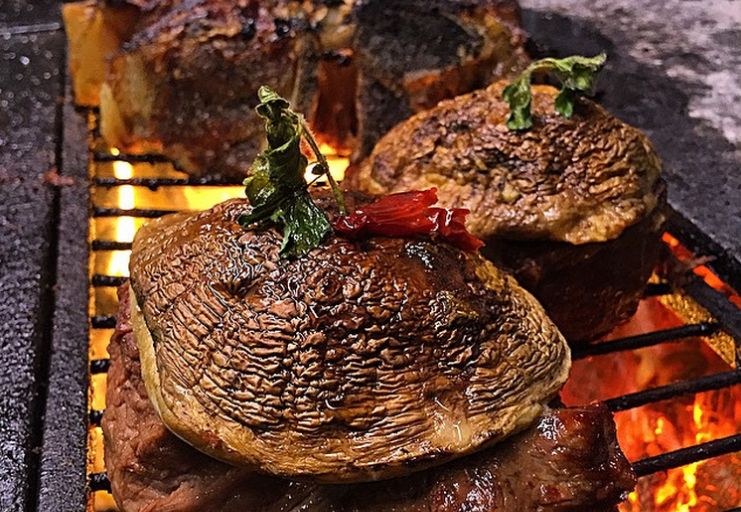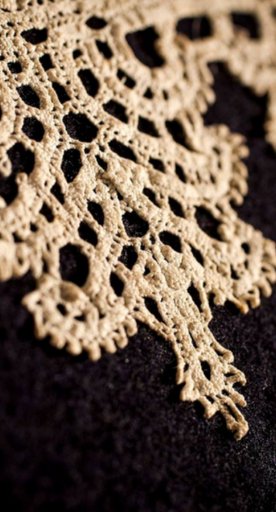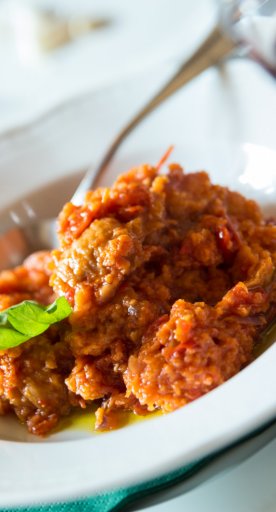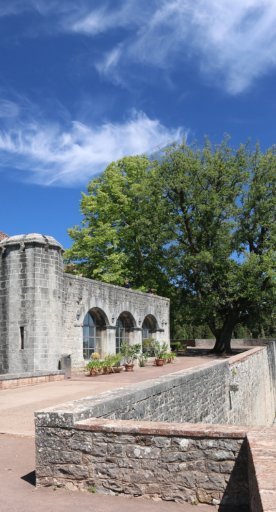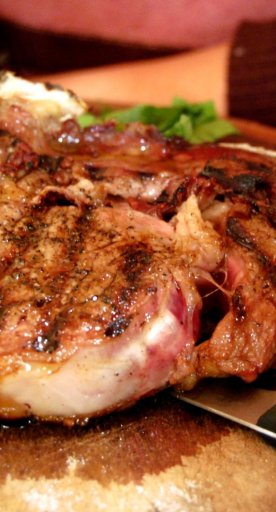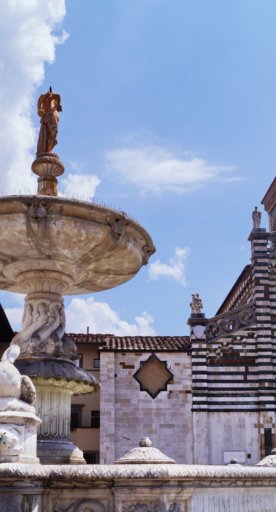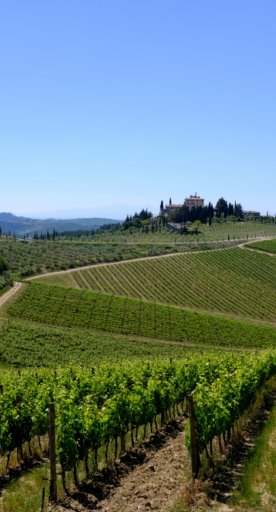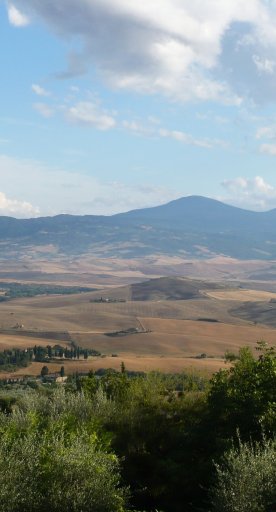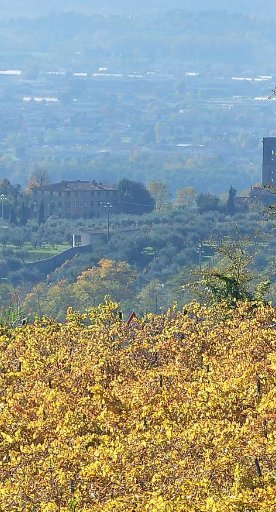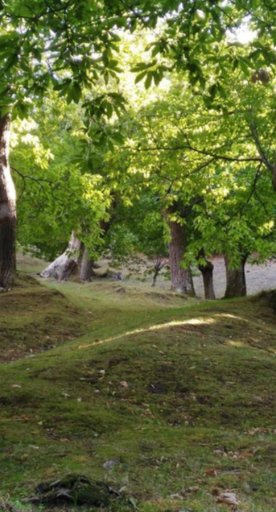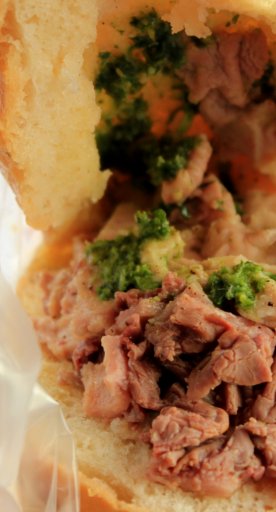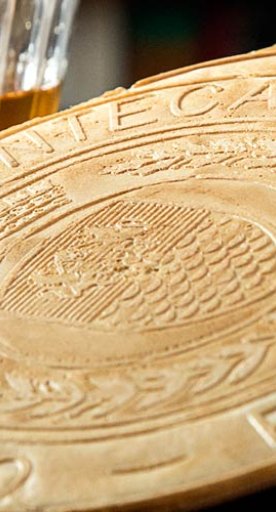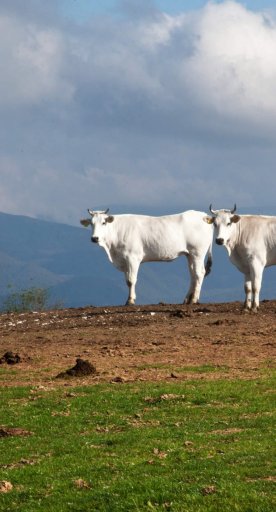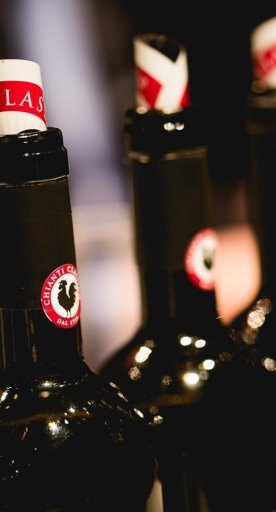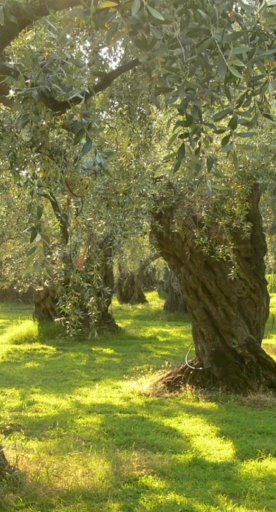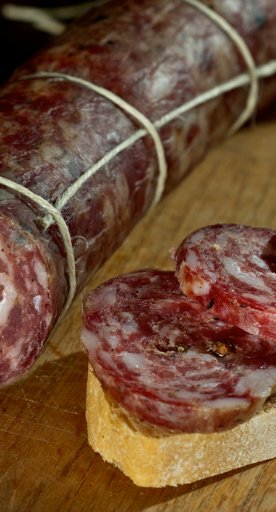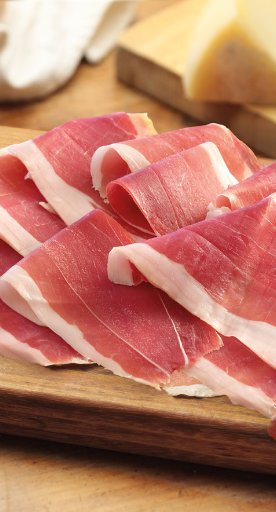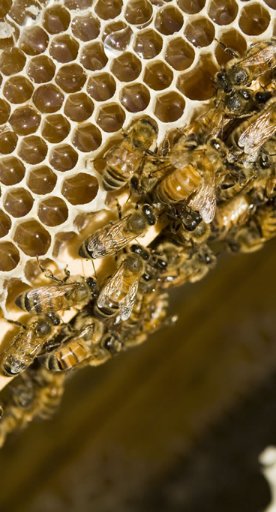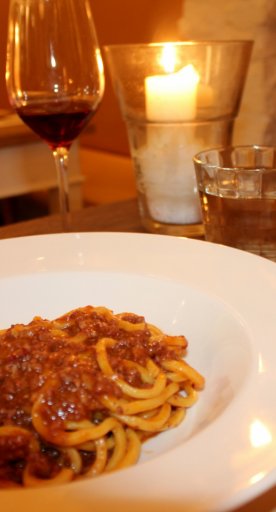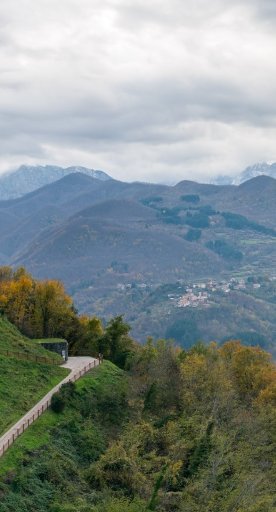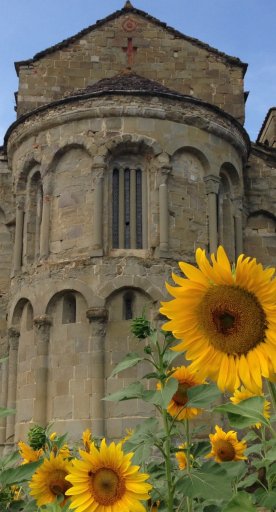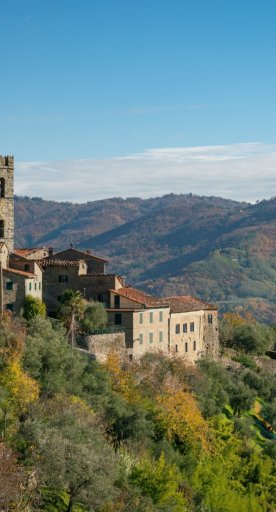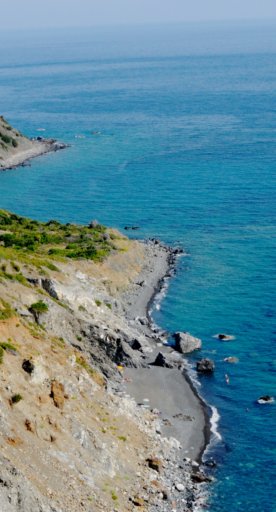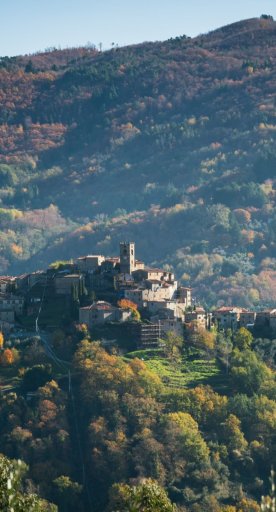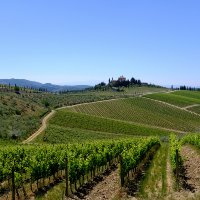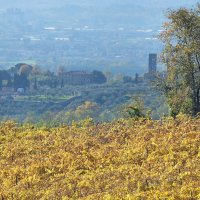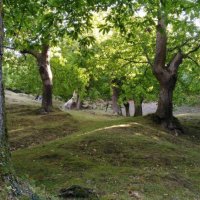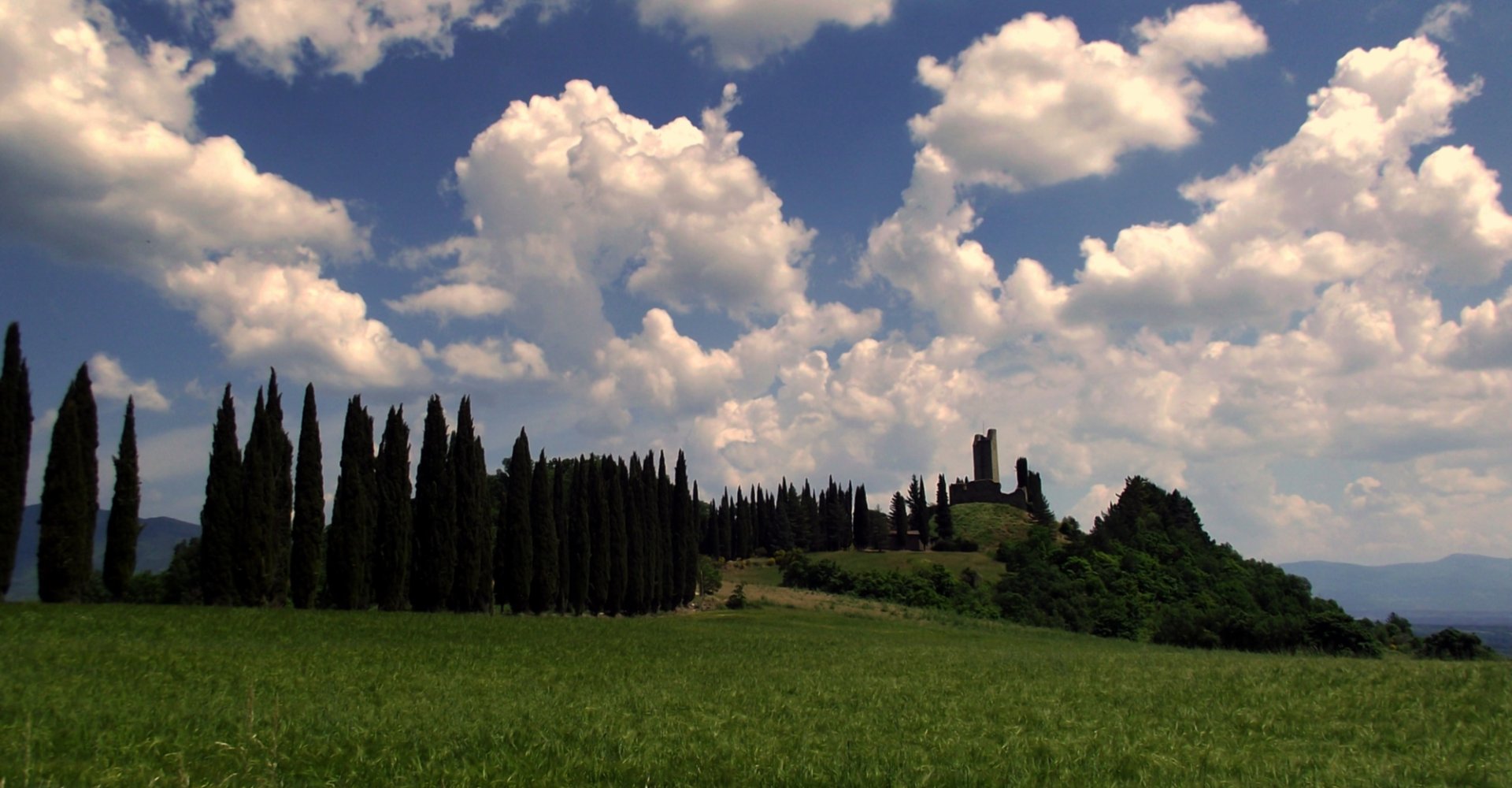
Pratovecchio Stia: food and wine favorites from the Casentino
Wine, water, trout and more tastes from the two-part town
Pratovecchio and Stia are two Tuscan towns that merged in 2014 for administrative purposes, but maintain separate identities and histories. This humble, two-sided portion of the Casentino Valley of the Arezzo province attracts more visitors than you might expect, but for good reason: most are gourmands or curious eaters eager to try the traditional products culled from the area’s natural assets. A temperate climate, enviable location and rich variety of vegetation are chief among these.
There’s “something fishy” about this stretch of Tuscany, that’s for sure. The Casentino region has long been celebrated for its super-pure waters, which are home to brown trout, breeded for both recreational and gastronomic purposes. We’re a little biased toward the latter, but if you’re interested in fishing for sport, be sure to read up on rules and regulations—available in Italian here. This type of trout typically has a tapered body shape, with compact, densely flavored meat, largely due to the microclimatic conditions of its environment. With a delicate yet decisive taste, this trout teeters between a gray and brown color and is catalogued in the Tuscan Region’s official list of recognized traditional products.
Not a fish fan? There’s plenty more to please your palate. For wine lovers, a stop in either Pratovecchio or Stia is a prime opportunity to break away from the dominant Sangiovese culture of Tuscany and try something new. Pinot noir production has picked up considerable steam in this area, particularly in wineries between Pratovecchio and Poppi. Given the geography of the area—we’re talking the upper Arezzo province and the mountainous stretch dividing Tuscany from Emilia-Romagna—its Pinot Noir is particularly cool and fresh.
Try pairing it with the regional rendition of pecorino, known as abbucciato aretino and sadly in danger of declining in production. Few dairy products have the historical prowess of this rich, raw milk cheese: centuries-old documents show that even 11th century monks in the Hermitage of Camaldoli frequently indulged in it back in the day. Salted and aged for at least 30 days, abbucciato aretino is a must on your meat and cheese sampler platter if you’re in the area.
Said platter would hardly be complete without a jar of regional honey. A group called “Miele Vangelisti”—literally “Honey Evangelists”—continues to spread the “gospel of honey,” so to speak. The numerous varieties produced in the area have as many flavors and shades as they do health benefits—chestnut honey is particularly worth seeking out, given the chestnut woods lining the area’s Parco Nazionale delle Foreste Casentinesi.
Finally, there’s a product rarely worthy of discussion, but in this case integral to local identity. Wait for it: water. Calcedonia water is sourced from ancient springs just beneath the Monte Falterona, home to the legendary Lago degli Idoli. This sought-after H2O is famous for its unique chemical composition, with countless beneficial properties. Aside from refreshing you on your journey through the area, Calcedonia water can be used in relieving cardiovascular or urinary tract issues. Today, it’s bottled and marketed by the Pierre Cardin Eau de Santé company under the brand name Maxim’s.
